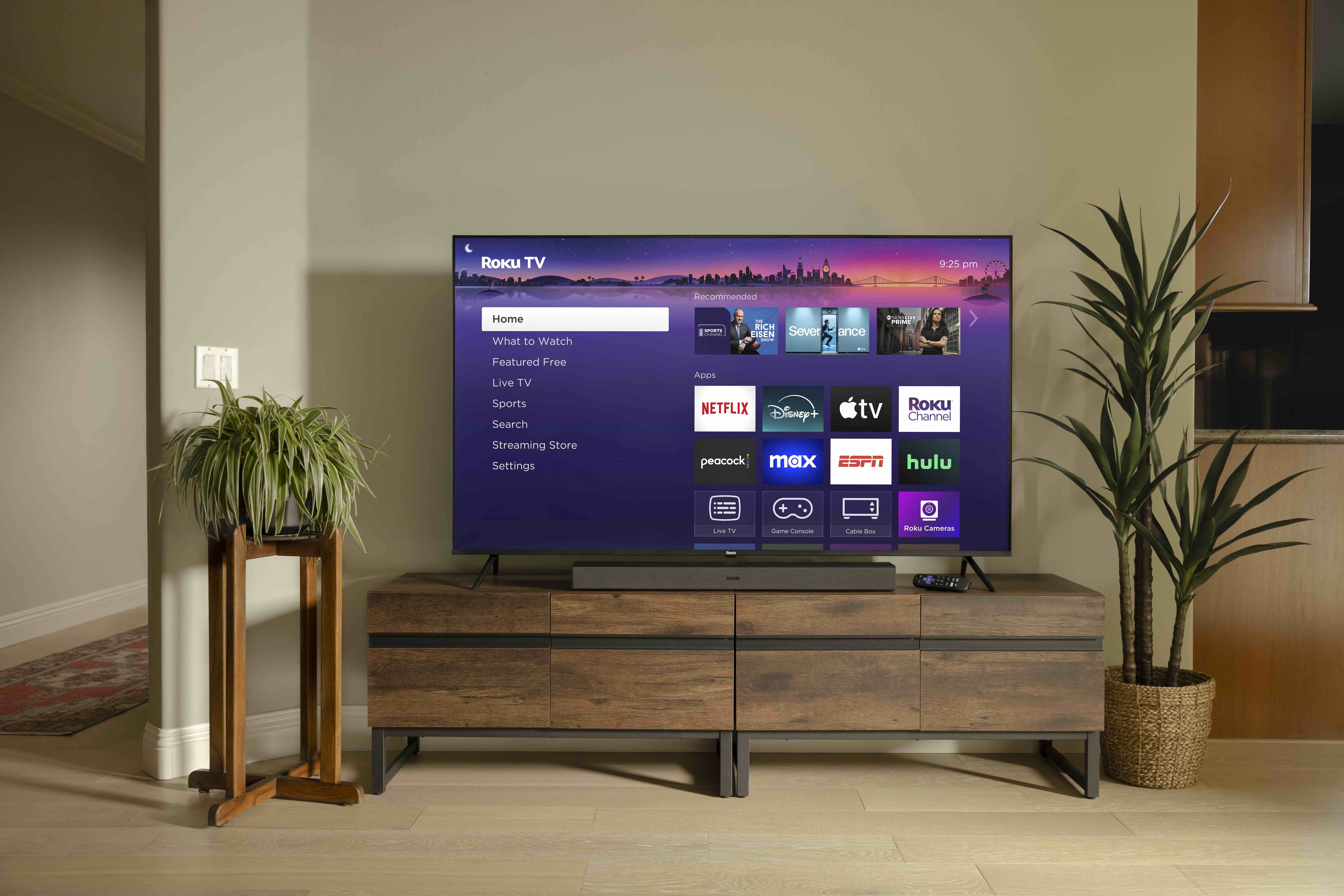HPA Tech Retreat Returns to Palm Springs to Explore Cutting-Edge Tech for M&E
A “who’s who” of media tech gathered to discuss new advances and network with colleagues
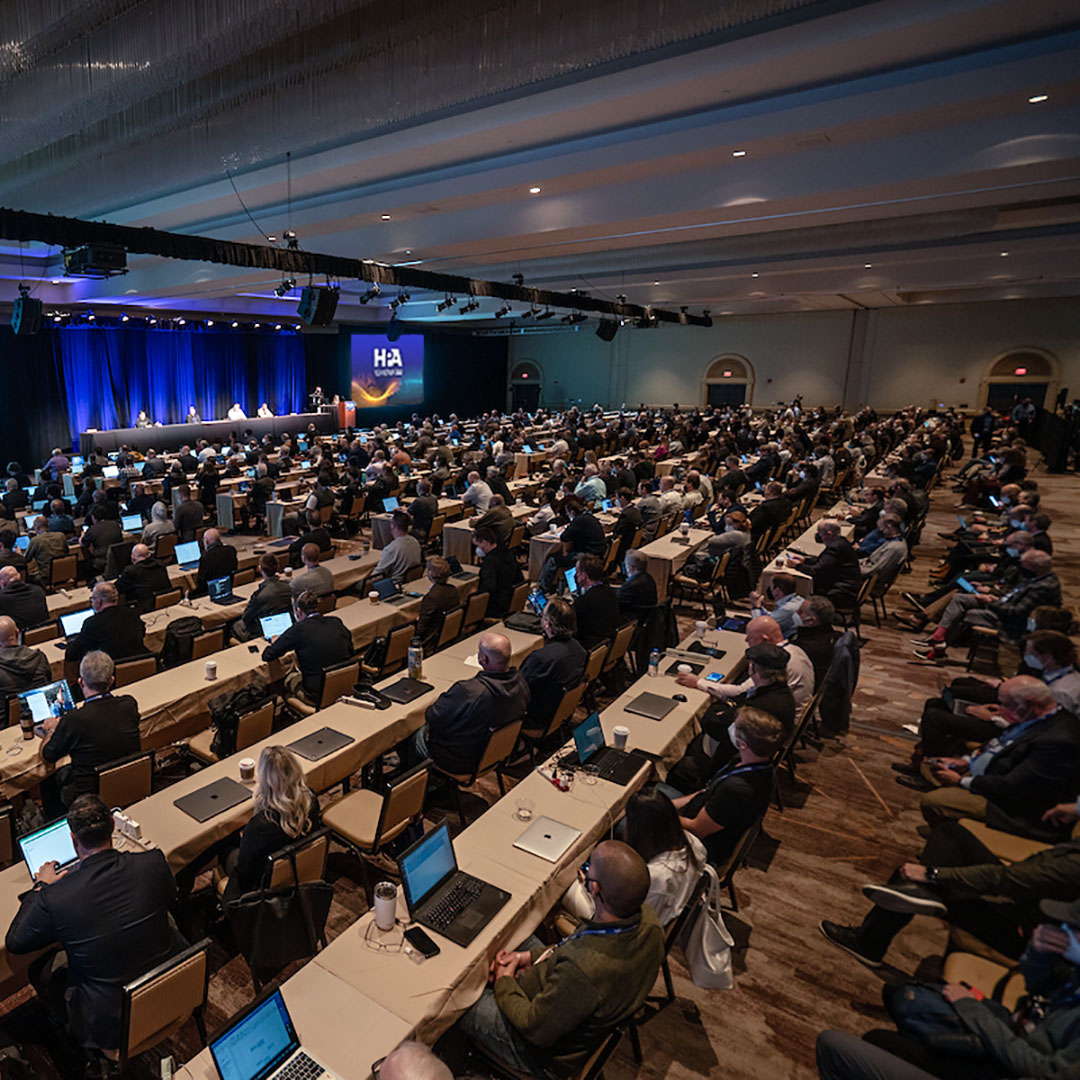
Palm Springs welcomed back some 700+ industry influencers for the annual Hollywood Professional Association (“HPA”) Tech Retreat, with a “who’s who” of M&E tech professionals gathering in person to discuss new advances and networking with colleagues on the future of media and entertainment.
In strict compliance with governmental guidelines and with proper COVID protocols in place, HPA’s TR 2022 resumed its intensive program Feb 21st with three sessions that centered on current and evolving production technologies.
Often considered “the premium conference” for M&E, HPA’s Tech Retreat had been "physically dormant" since its last gathering in February 2020. Returning to Palm Springs’ Westin Mission Hills resort, topics of interest included Extended Reality (XR), Volume production experiences, AI/ML, optimization of virtual production (VP) techniques, and emerging workflows for broadcast and cinematic motion picture and live production.
Accompanying the conference was HPA’s “Innovation Zone” where equipment representatives and services providers demonstrated technologies associated with the topics presented throughout the conference.
TR Extra
Open the conference was HPA’s Tech Retreat eXtra (“TR-X”), a half-day session titled “Blending Cine Cameras in Today’s Multi-Camera Live Production Environment.” TR-X focused on the "harmonization" of both broadcast and cinematic workflows centering on multicamera technologies described as the “meshing of cinema and broadcast,” according to the NAB Cine Consortium’s chair, Kristin Petrovich.
On-set production sound challenges were visually demonstrated using high-speed, acoustic-camera 3D technology. Ambient sound reflections from a single source were tracked onto a virtual set allowing VR-programmers to place sound in a VR-space which could be tracked and properly oriented during VR-postproduction and game creation processes.
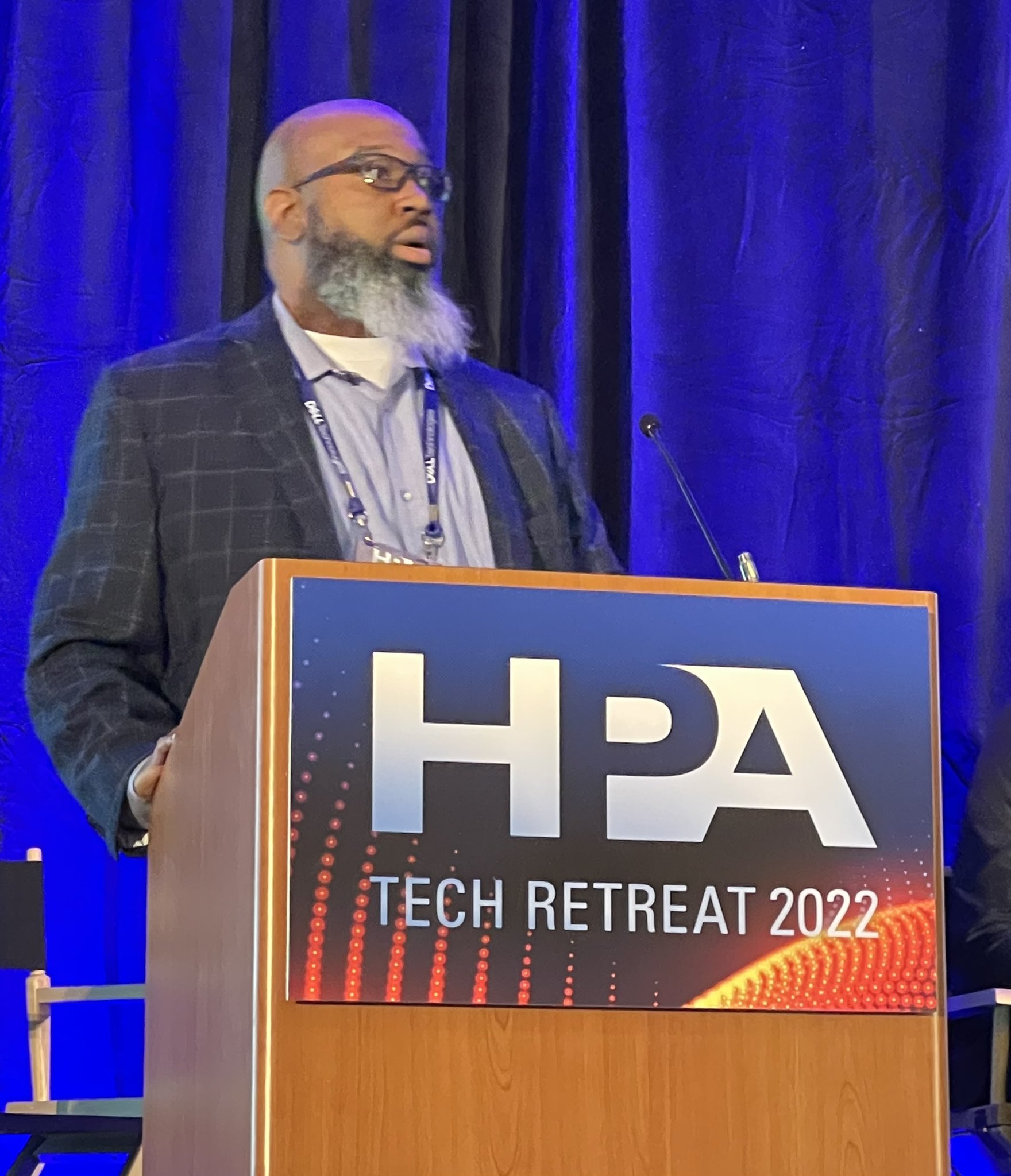
Session presenters included Renard Jenkins, SVP, Production Integration & Creative Technology Services for Warner Bros. Entertainment, who correlated the differences between broadcast 2/3-inch camera technologies against Super 35mm digital cinema cameras. Jenkins explained how systems are being transformed and how image capturing has moved from single-camera approaches to multicamera composition.
Get the TV Tech Newsletter
The professional video industry's #1 source for news, trends and product and tech information. Sign up below.
Interleaved with optical imaging principles and color science were tutorial presentations on how 23.98 fps resolved to 29.97 fps video.
Case Studies Explained
HPA TR-X always brings out the best in well-known case studies. Setups, workflows and configurations for Fox Entertainment Group’s “Field of Dreams” were explained by Tim Walker; and Ron Williams presented the equipment and challenges involved with the “Coachella and Billie Eilish” concert production.
Cine-Live, a case-study about producing the Super Bowl LVI halftime show was chock full of "behind the scenes" shots of setups, rehearsals, and equipment applications. Panelists explained how the entire show was "rolled into place" in under 8 minutes (during the commercial break at half time) and included rehearsals which individually mapped every cinema-type camera, via fiber, into the new NFL Media control rooms next to SoFi Stadium.
For the first time, the Super Bowl LVI halftime show employed a director of photography (DP) who crafted the show using 14 cinematic cameras with 23.98 production approaches for a 29.97 release format.
Cinematic Broadcast
Obvious to many were the ongoing references that “we are changing the landscapes we’ve been accustomed to for decades.” The paradigm shift toward "Cinematic Style Broadcast" was evident and accompanied the “importance of communications, the gear and technology, and how new skill sets (i.e., 'education') will be paramount to the LIVE35 and Cine/Broadcast migrations.”
Presenters further expounded on how to find that “killer workflow,” which still needs to be found. Coupling production into a "360-degree coverage" model was exemplified and will move toward a developing concept whereby “all [the] action happens in real time,” that is, a "no-post" environment, which, in the end may become the elusive new killer workflow.
HPA TR day 2 included a Supersession, focusing on Virtual Production with an entire day dedicated to Virtual Art Direction (VAD); production beyond the "just the wall" as in LED screens which form the Volume; innovations in remote-mobile-live workflows; and AI-assisted artistry which covered procedural version ML (machine learning) including the value of scan-based workflows.
Image Ownership
Tuesday afternoon featured a discussion on “who owns the image” from the perspective of directors, cinematographers, and key creatives. Greater depth with regard to “In-Camera Visual Effects” (ICVFX), the process of capturing visual effects live and in-camera on set (as within an "LED Volume"), discussed the technical requirements behind tracking, lighting, colorimetry, and staging for the Volume (see Fig. 1 and workflow diagram for one of three Volumes demonstrated).
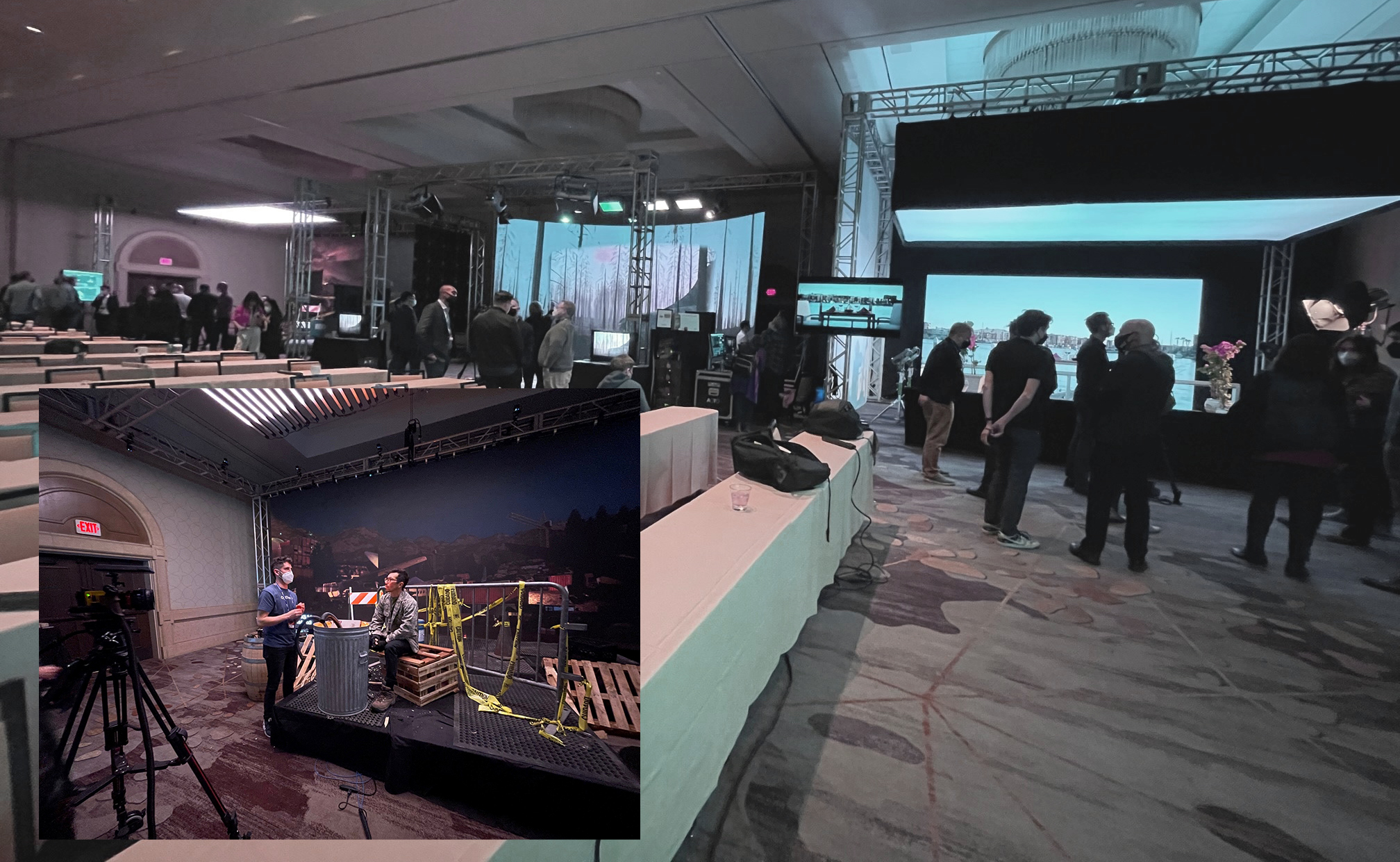
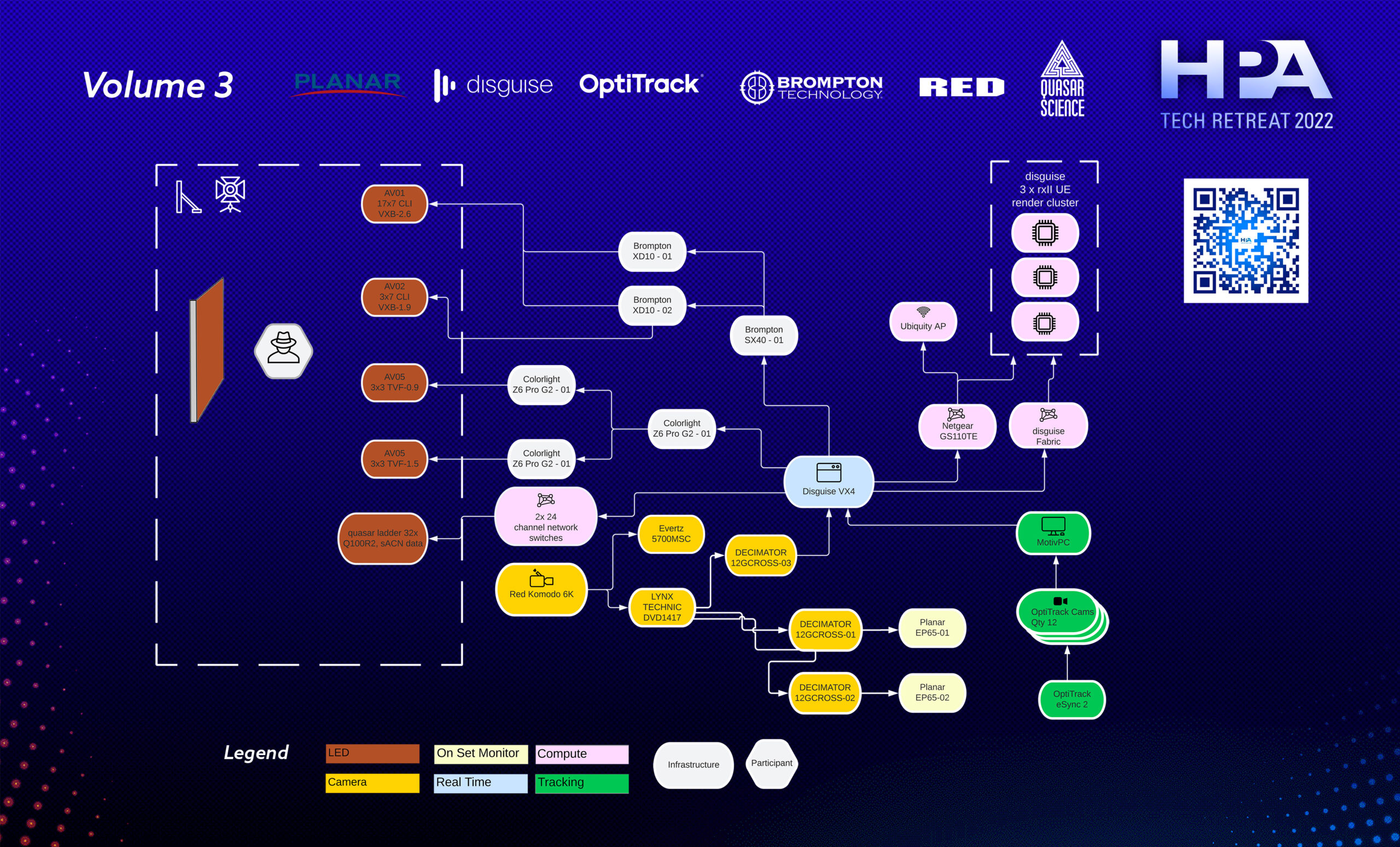
Heavy duty topics centering on ML/AI, automation, and the requirements for addressing change in the industry had presenters expressing some frank points on developing software, such as “should you build or buy?” and “because you should, not because you can.”
Risk assessment and readiness were statistically represented with analysis pointing out that “66% of [all] software development projects end in partial or total failure.” Furthering that topic, Rich Welsh from Deluxe, stated that “over half of all software development will cost 189% of the original budget” followed by “85% of A.I. projects fail.”
Enter the Metaverse
In addition to HPA Tech Retreat Chair Mark Schubin's annual technology review and the unusual updates from an almost absent CES 2022 by Pete Putman, attendees also got a look into the "media metaverse."
Via the exploration of dvLED (direct view LED) production and the migration of game development techniques into film production, this "near-return-to-normal" HPA Tech Retreat had several topics illustrated by examples, demonstrations and experiences which cast media and entertainment into an evolving "metaverse."
Described as a “unified space that integrates multiple virtual worlds into a single, interoperable location that can be accessed by many concurrent users,” attendees learned how the "metaverse" includes everything from gaming to multiple-camera productions on a single-stage (the Volume) and beyond. Opening a much broader dimension for creativity, in its earliest iterations, the "media-metaverse" might be seen as an entertainment experience unto itself.
Virtual Humans
HPA opened the door even wider to "virtual humans" and the concept of "Hub Not Home," (aka "why new ways about working aren't about COVID"), further exemplifying a multitude of changes collectively associated with live production, studio production, and a new space for postproduction.
Beyond those topics, MovieLabs provided an update to their 10-year "2030 Vision for Media Creation" and the American Society of Cinematographers Motion Imaging Technology Council (ASC MITC) revealed The Mission, its new 17-minute next generation version of the Standard Evaluation Material (StEM2) for digital cinema test and evaluation.
This year's HPA Tech Retreat exemplified the idea that virtual is “no longer a futuristic notion,” showing that immersive surroundings are changing the how, why, and for what purpose next generation experiences in the motion-picture production are expected. HPA’s Tech Retreat is always an eye opener, with one interesting and concluding perception initiated from COVID-19’s impact that “…home-based work will reduce and become the exception rather than the rule [or the norm].”
Let’s see if this prediction remains as HPA resumes again, next year!
Click here for a photo recap of the event.

Karl Paulsen recently retired as a CTO and has regularly contributed to TV Tech on topics related to media, networking, workflow, cloud and systemization for the media and entertainment industry. He is a SMPTE Fellow with more than 50 years of engineering and managerial experience in commercial TV and radio broadcasting. For over 25 years he has written on featured topics in TV Tech magazine—penning the magazine’s “Storage and Media Technologies” and “Cloudspotter’s Journal” columns.
